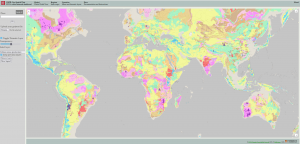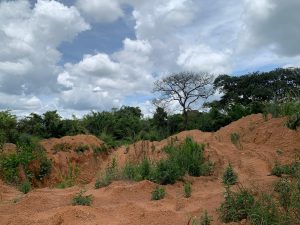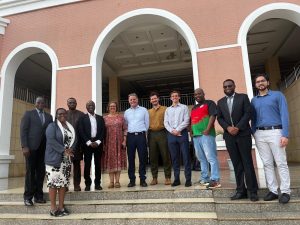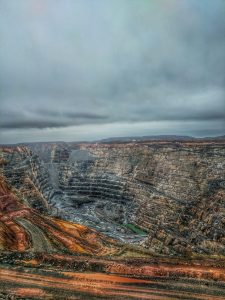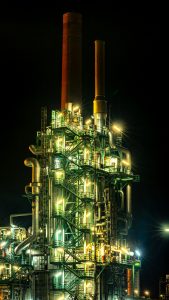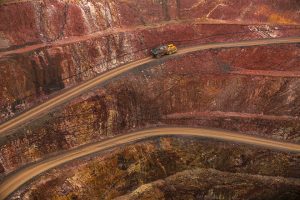Guides to…
Here are our guides to understanding commonly used terms and phrases within engineering, sustainability, and resource efficiency.
CAPACITY FACTOR
Capacity factor is a measure of the reliability of a power plant. It is expressed by the ratio of energy produced divided by the theoretical maximum output:
Capacity Factor (CF) = Energy output/Theoretical maximum output
Therefore, CF must be greater than 0 and less than 1.
Capacity factor is used to estimate energy production and to project the levelised cost of energy (LCOE).
For example, imagine some solar panels with a nominal capacity of 15kW that produced 19710 kWh during a year:
CFsolar = 19710 kWh/(15kWh x 365 days x 24 hrs/day) = 0.15, or 15%
The Capacity Factor of the solar panels is 15%. This means that in reality it produced 15% of the energy that they could theoretically have produced over a year if all conditions were perfect.
Each power generation technology has a typical value for its capacity factor.
For example, wind power needs the wind to blow, while a biomass-powered power plant can run continuously if there is enough fuel.
Power plants with different roles also have different capacity factors.
Base load plants operate at the maximum capacity continuously.
Peak load plants operate during the period of peak demand, so they tend to have a lower capacity factor.
The capacity factor of an intermittent power source (e.g., solar or wind) is affected by weather conditions, the power dispatch capacity of the grid, and the mismatch between production and demand.
Capacity factor is a simple and powerful approach that quickly delivers insightful information about a power system. We can use it as a ‘fact-checking’ tool, e.g., to check a plan proposed by the government or the expected performance of solar panels you are considering installing at your home.
CIRCULAR ECONOMY
“A circular economy is one that is restorative and regenerative by design and aims to keep products, components, and materials at their highest utility and value at all times, distinguishing between technical and biological cycles.” (Ellen MacArthur, 2015)
CE is a model of production and consumption which involves sharing, leasing, reusing, repairing, refurbishing, and recycling existing materials and products for as long as possible.
In a perfect circular economy, the quantity of materials in “closed loops” must be conserved.
In practice, materials leak from recycling loops or delayed from exiting the economy. This loss requires the addition of new material to maintain circularity.
A α value of 1 would describe perfect circularity of quantity: an economy in which input demands and recoverable end-of-life (EOL) outputs are balanced.
α = recovered EOL material/total material demand
A β value of 1 would describe perfect circularity of material quality: an economy in which no loss of material quality occurs with each recovery cycle.
β = energy required to recover material/energy required for primary production
Circularity Index (CI) = αβ
This is a rough estimate of material circularity that takes into account losses in both quantity and quality when reprocessing materials.
Circularity Index results give an initial indication of the gaps between theoretical circularity (CI = 1) and the reality for materials (CI << 1).
The circular economy, if refined, is a systems solution framework that tackles global challenges like climate change, biodiversity loss, waste, and pollution.
Further reading: Cullen, J.M. (2017), Circular Economy: Theoretical Benchmark or Perpetual Motion Machine?. Journal of Industrial Ecology, 21: 483-486. https://doi.org/10.1111/jiec.12599
EXERGY
Exergy is a measure of resource quality. Resource quality refers to the amount of work a system can perform before it reaches equilibrium with the environment.
The greater the difference between the system’s characteristic (e.g. temperature) and the reference environment, the higher the exergy that can be extracted.
At ambient temperature of 15°C, 1 Joule of heat at 1000°C can produce 0.77 J of work, while 1 J of heat at 30°C only produces 0.05 J of work.
1 J of electricity is pure exergy so it represents more exergy that 1 Joule of heat. Unlike energy, which is transformed, exergy is always destroyed (2nd law of thermodynamics).
Also known as resource efficiency, exergy efficiency expresses how far a process is from its theoretical minimum. The theoretical minimum represents the best possible performance if there are no losses within the system.
Exergy efficiency illustrates how much output can be obtained from the total inputs.
ε = exergy output / exergy input
GRAPH REPRESENTATION LEARNING
Graph Representation Learning (GRL) is a computational method used to predict the properties of an entity given it’s relationship to other entities.
GRL underlies systems that predict which show you would prefer to watch (e.g. Netflix), which chemical compositions will be effective drugs, and even which roads will be less congested (e.g. Google Maps).
In climate change mitigation, we are using GRL to predict the emissions of an industrial facility given it’s relationships to other facilities with better data.
This can help us monitor progress towards net-zero pledges and investigate the evolution of emissions associated with products through time.
The advantage of GRL is that the more data we get for any facility… the better our understanding of emissions for all facilities becomes.
MACHINE LEARNING
Machine learning concerns itself with imitating intelligent behaviour in artificial systems. In practice, machine learning involves algorithms that incrementally update, or learn, how to achieve a task by being shown examples in the form of data.
Such algorithms can be…
Supervised – labelled examples in a dataset provide supervision
Unsupervised – no labels provided, and instead tasked with unpicking patterns between datapoints in the dataset
Reinforced – a reinforcing reward is provided for good performance, with respect to the human-defined task
The canonical machine learning use-case is in captioning pictures of cats and dogs a supervised algorithm is shown a dataset of pictures each with a label describing whether the picture represents a cat or dog. The algorithm updates its parameters until it can be shown a new picture and correctly predict its content.
MATERIAL FLOW ANALYSIS
Material Flow Analysis is a tool for understanding the scale of material flows through parts of society.
Material Flow Analysis helps link these flows to environmental impacts related to material extraction and production, and for exploring options to ensure materials are used efficiently.
There are three key tenets of MFA: 1. Materials; 2. Flow structure; 3. Analysis.
Materials: What different materials are present? How are these measured?
Flow structure: What is the underlying flow structure? How is this best visualised? How are data reconciled and uncertainty incorporated?
Analysis: What insight is gained about the material system?
Together, these elements render MFA extremely useful for disentangling and demystifying complicated supply chains, letting us see where environmental impacts occur and where they can most effectively be mitigated.
SANKEY DIAGRAMS
A Sankey diagram is a visual representation of the inputs, flows, transformations, and outputs of a system or process.
The first official Sankey diagram was used to show the energy efficiency of a steam engine in 1898. However, before this, Charles Minard used a Sankey diagram to chart Napolean’s invasion of Russia in 1812.
In Engineering, they are often used to map the flows of energy, materials, or greenhouse gas emissions in industrial processes.
Sankey diagrams can helpfully demonstrate first law of thermodynamics – the conservation of mass and energy.
They can show us what resources are used to make products, and what happens to them throughout their journey from cradle to grave.
They help identify where byproducts and waste are produced in a system…
…where there are opportunities to use the available materials more efficiently…
…and where greater circularity might be pursued.
TRACEABILITY
Traceability is the ability to access specific information about a product captured and integrated with its recorded identification throughout the supply chain.
To execute traceability, a business operator groups raw materials and products as batches or lots and assigns them discrete identifiers.
The business operator uses the identifiers to record the transformations (e.g. mixing the batches) – noting their inputs, outputs and intrinsic characteristics.
All or part of the recorded information in the business operator is then transferred, with the product, to the next supply chain link.
This creates an information trail that allows us to follow the product movement within business operators and throughout the supply chain.
The traceability information can be used for various purposes such as:
– inventory management
– real time product quality monitoring
–quick recall of affected product lots
Traceability technologies have great potential to improve sustainable performance by reducing food loss.
Read more of Refficiency’s Samantha’s work on this here.

